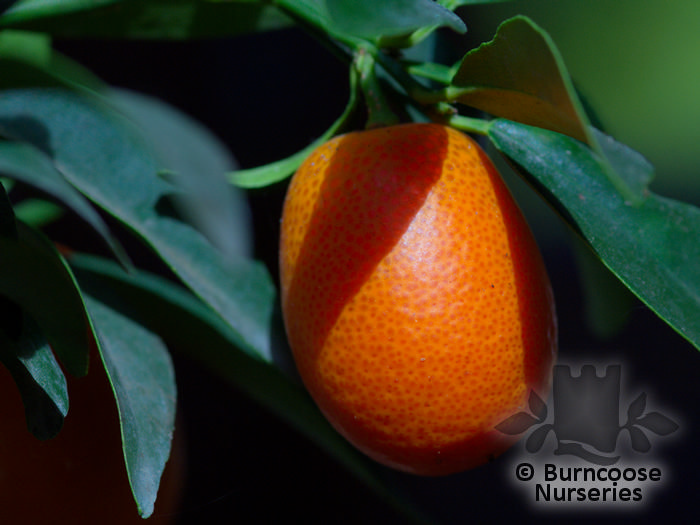CITRUS Kumquat

<




>
CITRUS Kumquat

(C.japonica) orange edible fruits with sweet skin and acidic flesh.
Full Plant Details - Sun/Soil & other attributes
-
Floweringlocal_floristJanlocal_floristFeblocal_floristMarlocal_floristAprlocal_floristMaylocal_floristJunlocal_floristJullocal_floristAuglocal_floristSeplocal_floristOctlocal_floristNovlocal_floristDec
-
 Good to know
Citrus japonica. Syn Fortunella japonica. The most diminutive of the citrus family
Good to know
Citrus japonica. Syn Fortunella japonica. The most diminutive of the citrus family -
 Pests & Diseases
Red spider mites, whiteflies, scale insects, mealybugs
Pests & Diseases
Red spider mites, whiteflies, scale insects, mealybugs -
 Place of origin
southern China
Place of origin
southern China -
Evergreenmid- to light green, glossy leaves to 10cm (4in) long with distinctive vein patterns
-
 White
White
-
Cup-shapedShallowly cup-shaped 1cm (½in) across
-
Tender (greenhouse & conservatory)
-
 Entire
Entire
-
 Lanceolate
Lanceolate
-
 Height
2.5-3.6m (8-12ft)
Height
2.5-3.6m (8-12ft) -
 Spread
1.5-2.5m (5-8ft)
Spread
1.5-2.5m (5-8ft) -
FruitPlants which produce an edible or ornamental fruitProduces round to oval orange-yellow fruit 2.5cm (1in) in diameter with mildly acidic pulp and sweet, edible skin
-
Tall ShrubOr small tree, usually many-branched with spines in the leaf axils. Produces axillary clusters of flowers
-
 Pruning group 1
Suitable for: Deciduous and evergreen trees, and some deciduous shrubs.
Pruning group 1
Suitable for: Deciduous and evergreen trees, and some deciduous shrubs.
Pruning: Minimal pruning required. Prune wayward or crossing branches to maintain a healthy framework.
When: When dormant in the late winter/early spring. Some in the summer/autumn to prevent bleeding of sap.
-
 Heated greenhouse - warm temperate
Can be grown outside in summer. Plant can withstand temperatures down to 5°C (41°F)
Heated greenhouse - warm temperate
Can be grown outside in summer. Plant can withstand temperatures down to 5°C (41°F) -
Scented flowers
-
Scented foliage
-
Autumn Seasonal Interest
-
Spring Seasonal Interest
-
Summer Seasonal Interest
-
Winter Seasonal Interest
-
Fertile moist well-drained soilModerately fertile
-
Neutral to acid soil
-
 Full sun
Full sun
-
Rabbit Resistant
View Planting Tips and Care Advice
Citrus Trees - Care Guide






